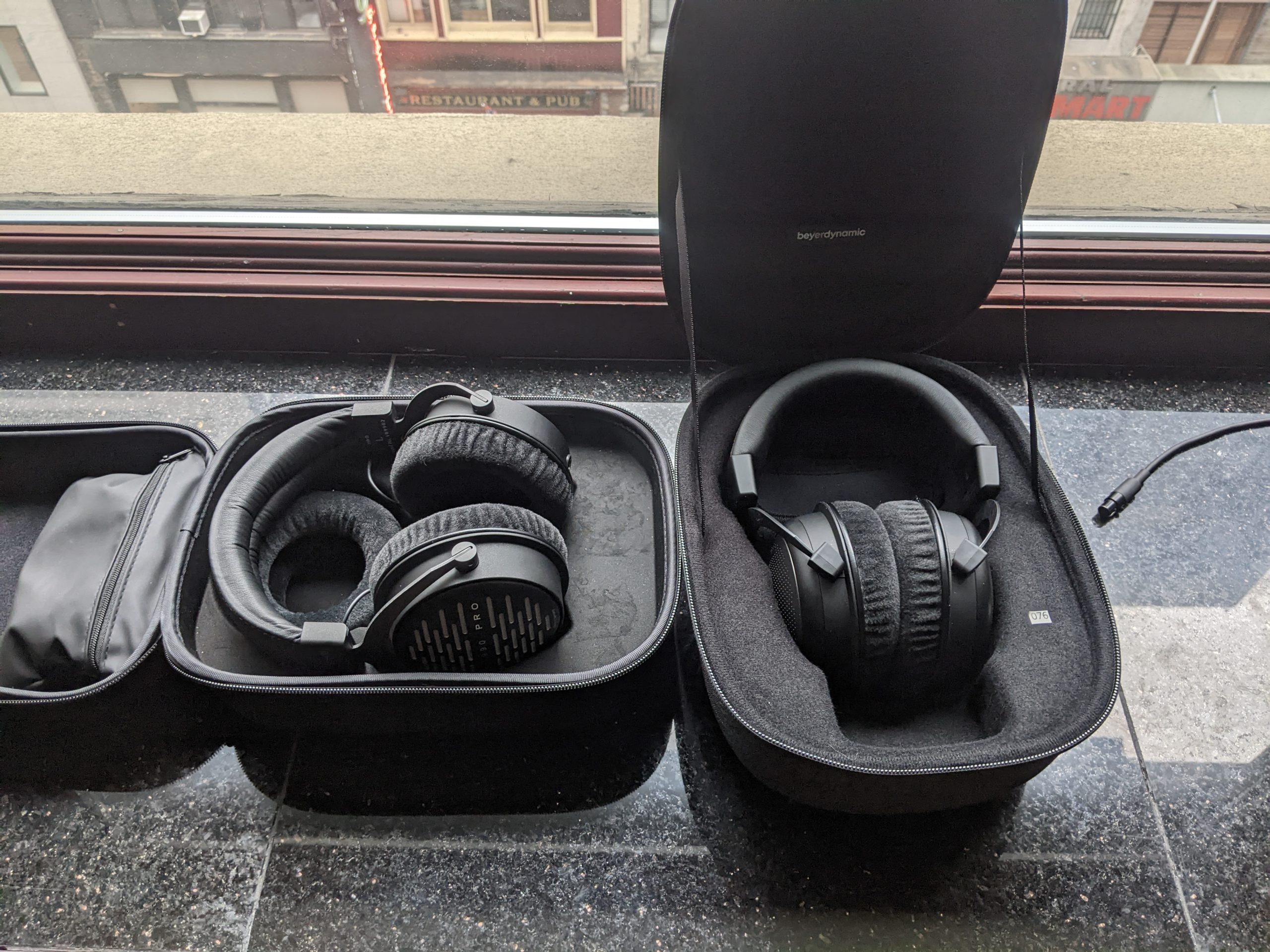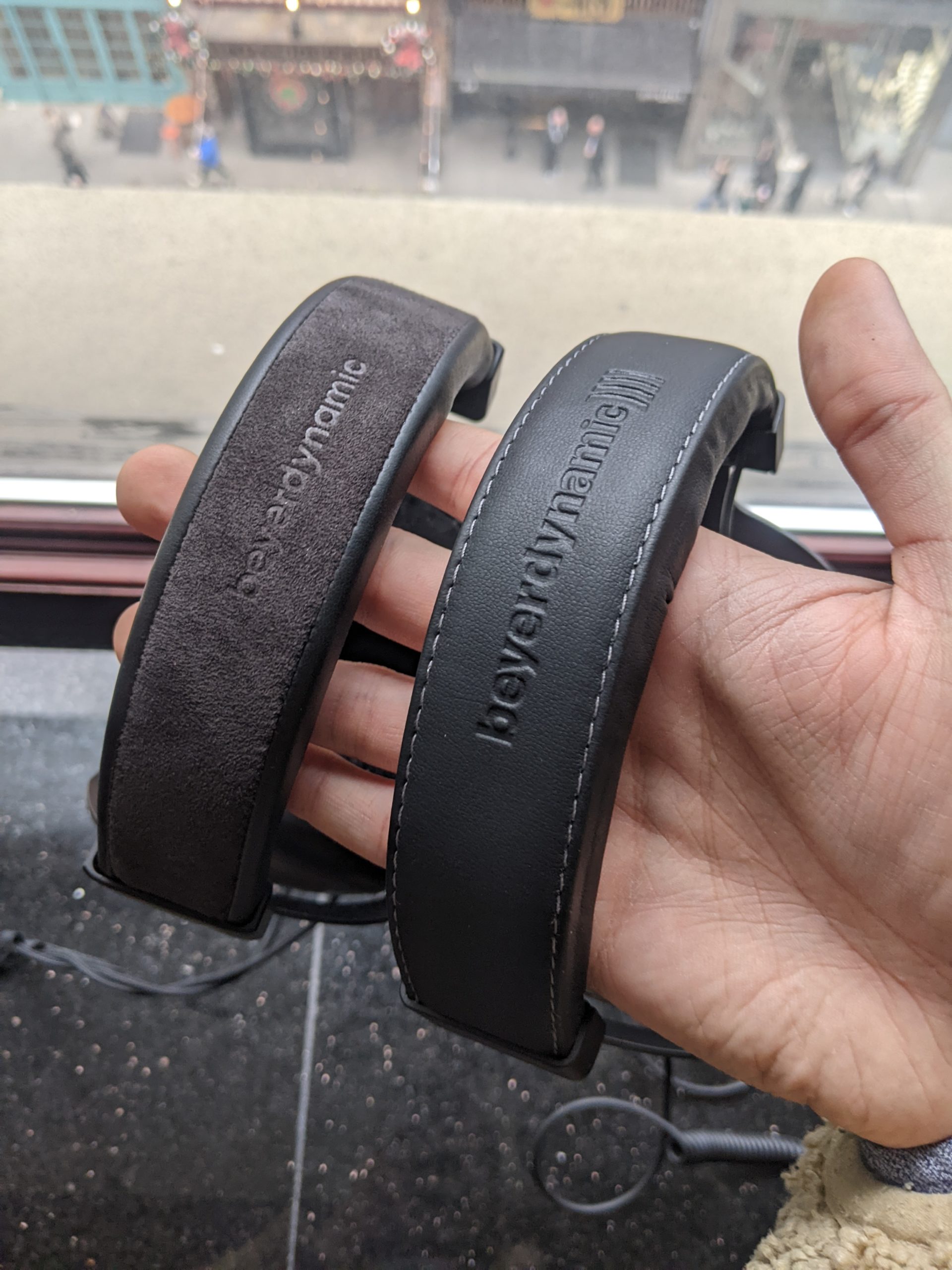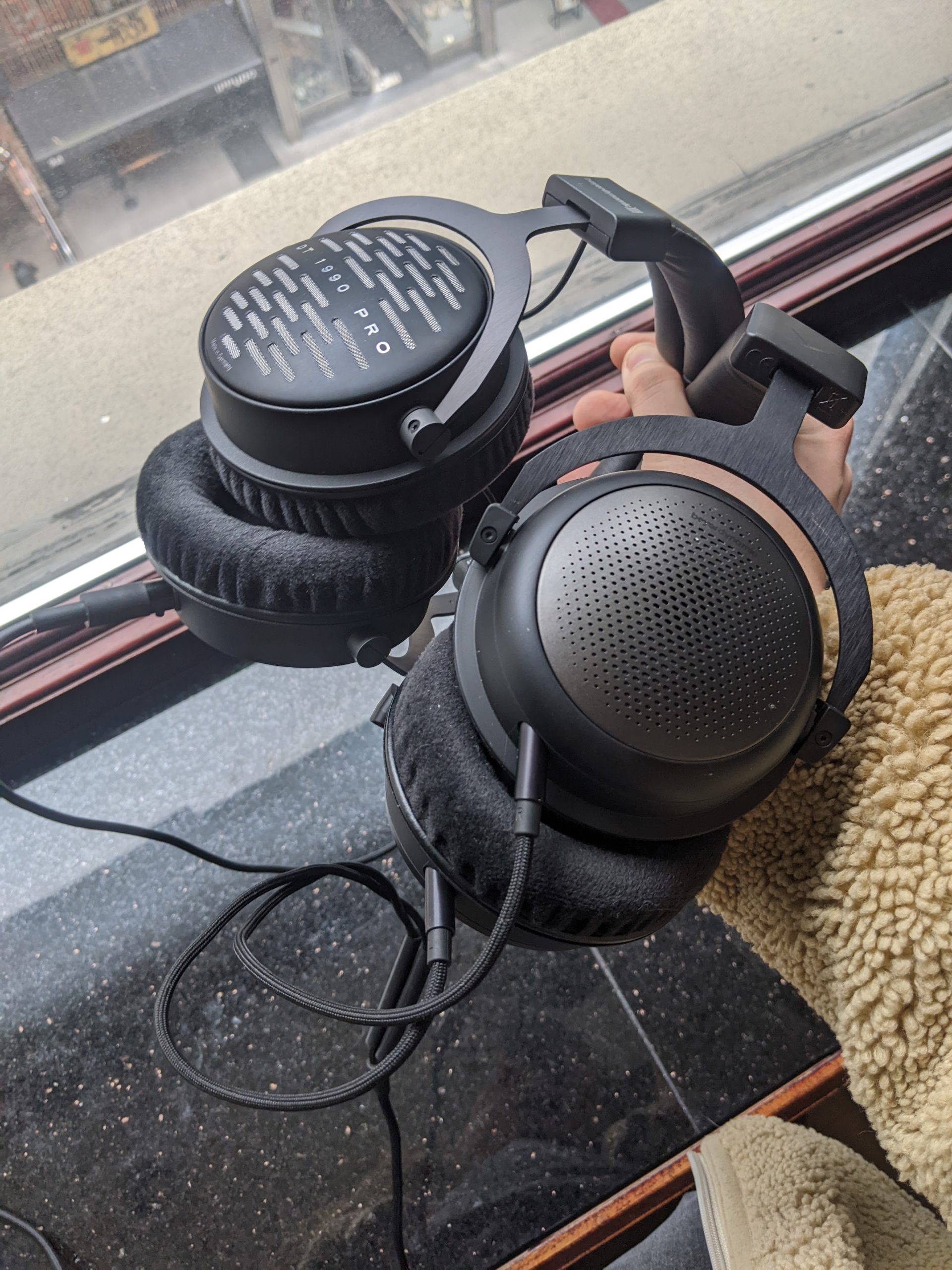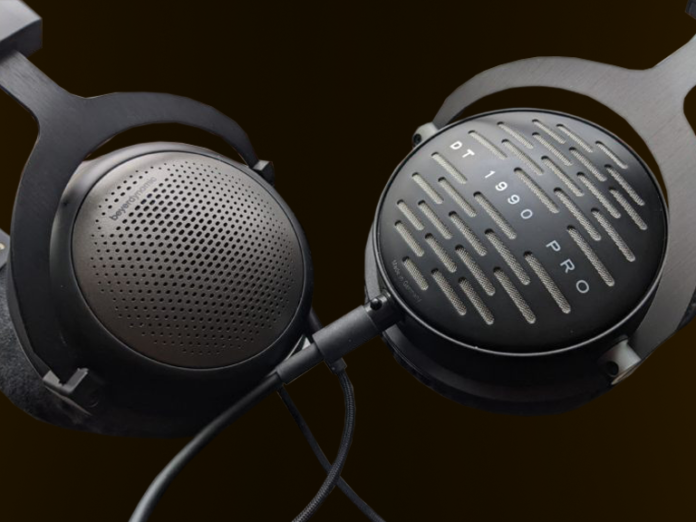Beyerdynamic DT 1990 Pro vs. Beyerdynamic T1 (3rd Gen)
At this point it’s fair to say that the Beyerdynamic DT 1990 Pro is a legendary headphone, seemingly outpacing the companies flagship open-back the T1 in popularity. A handful of people reading this likely just learned this moment that there’s a flagship T tier that supposedly goes above and beyond the company’s DT series. The open-back T1 is on it’s 3rd generation, and it’s about time I explore my curiosities with this open-back unit by putting it up against the DT 1990 – an open back I’m plenty familiar with. With the Beyerdynamic T1 going for $699 from most retailers, it is really that much better than the DT 1990 Pro, currently priced around $450?
What’s In The Box

| Beyerdynamic DT 1990 Pro | Beyerdynamic T1 3rd Generation |
|
|
Look and Feel
Some things never change. When it comes to Beyerdynamic, that goes for their round, circumaural cans, which are featured on the T series as well as the DT series. That said, there are a few key differences to go over. Both pairs are genuinely comfortable with chic and serious looks, but the guiding theme of this review is already foreshadowed: the DT 1990 is all about studio-production utility with its all-vegan-leather headband, while the T1 3rd Generation features a luxurious strip of alcantara (a soft, velvety material) on the top of the headband. A similar sentiment can be found with their cables: the DT 1990 comes with two cables, one coiled and one straight, while the T1 3rd Gen comes with one more textured, seemingly nylon-shielded cable.
Once I started wearing the both pairs, however, I had a hard time remembering which one I had on when music was off. Weighing in at 360 grams, the Beyerdynamic T1 3rd Gen is a mere 10 grams lighter than the DT 1990, and has extremely similar headband pressure (very tight) and velour earpads (very soft) to the DT 1990 Pro.

Technical Design
The first major technical design difference worth noting is the T1 3rd Gen’s inclusion of a neodymium magnet in its dynamic driver. The inclusion of this component leads to more magnetic circuitry and a more powerful driver. The second major technical design difference between the Beyerdynamic DT 1990 Pro and the T1 3rd Gen is their driver positioning: the 1990 Pro’s driver point directly at a listener’s ears from the side, while the T1 3rd Gen’s drivers are positioned towards the front of the headphone chamber, then tilt back towards a listener’s ears. This is a feature that I’m always curious and excited to see in headphones, as it should, in theory, lead to more vivid imaging.
| Specs | Beyerdynamic DT 1990 Pro | Beyerdynamic T1 3rd Gen |
| Operating Principle
Driver Impedance Sensitivity (Nominal) Frequency Response |
Open-back
Dynamic 250 ohms 102 dB 5 Hz – 40 kHz |
Open-back
Dynamic w/ Tesla Coil 32 Ohms 100 dB 5 Hz – 50 kHz |
Sound Stage
In my time spent with both units, it was the Beyerdynamic T1 3rd Gen’s sound stage that outperformed the DT 1990 Pro more than any other sonic quality. The DT 1990 and T1.3 both have excellent imaging capabilities that provide precise and engaging angular qualities; but the sheer size of the T1 3rd Gen’s stage sets it apart from any Beyerdynamic DT series headphone. The DT 1990 has an adequate stage, but feels somewhat tight and insulated, keeping most parts feeling close to the face – something I can see serving a utility for mixing and or other technical purposes. The T1.3, on the other hand, provided a serious increase in depth and, in particular, width. This increase in size resulted in more movement and excitement in its imaging. I suspect that this expanded stage has to do with the tilted drivers, but I also noticed when I had the headphones off of my ears that the T1 3rd seems to be significantly more open than the DT 1990 as it bled sound far more loudly at similar volumes.
Lows
The key difference between the Beyerdynamic DT 1990 Pro and the T1 3rd Gen can be summarized as the following: the 1990 Pro is a headphone for audio engineers, while the T1 3rd Gen is a headphone for audiophiles. This may be reflected in the size of their sound stages, but it’s particularly apparent in their low ends. The DT 1990 Pro isn’t what I would call light on bass, but it nonetheless sees some gentle low end attenuation. This is a staple for technical headphones, which are looking to avoid masking issues that come into play with lower frequencies. If you’re in the market specifically for a mixing headphone, the DT 1990 has a near ideal low end balance: present enough to not be boring, quiet enough to vividly hear and dissect other parts of the frequency spectrum. If you’re not explicitly looking for a mixing headphone, the DT 1990 seems a bit more cold and sterile sounding than the T1 3rd Gen, which packs more low end volume, rumble, and slam.
The 1990 has a reserved-but-present low end that’s great for dissecting music, while the T1 3rd Gen brings a pleasant low end warmth and growl that seems better suited for being immersed in music.
Mids
Center frequency balance seems to be what these two Beyerdynamic headphones have most in common. Low mids are moderately favored, particularly on the the T1.3, but more generally come across as even and balanced. Vocals are very natural on both headphones, as are acoustic guitars and other core parts of mixes. The most intelligible differences I experienced were found in the headphones’ low and high frequency profiles.
Highs
The DT 1990 Pro, like many headphones in the DT series, has a notorious spike around 10 kHz that leaves some people praising it for its resolve and others cursing it as a sibilant factory. Though I’m usually a fan of the intense high frequency qualities present in DT series headphones, I can’t deny that they can sometimes become overbearing, even as some one with pretty trebly preferences. This high-middle treble spike is still present in the T1 3rd Gen, but its far less dramatic and presents itself at a much lower intensity.
Another very notable difference in the high frequency balance occurs in the low mid treble. The DT 1990 Pro doesn’t shy away from this region, which contains important information when mixing. The T1 3rd Gen opts to cut some of this range, which takes some of the bite out of reed instruments and distorted guitars, but further emphasizes its warmer and softer qualities.

Overall
The Beyerdynamic DT 1990 Pro is one of the best headphones you can ask for as a mixing engineer, but I have to admit that they can sound a little sterile and unforgiving for just everyday listens. Here, the T1 3rd Gen steps into the picture, infusing the accuracy of the 1990 with warmth, softness, and a an overall less fatiguing sound quality. Balance aside, the size of the sound stage seems to be the most compelling and obvious upgrade that the T1.3 has to offer. If you’re in the market for a mixing headphone, both are good choices, but the DT 1990 is going to provide a more realistic representation of your mixes. If you’re simply looking for a good listening headphone, both are again good choices, but the Beyerdynamic T1 3rd Gen has more to offer in the way of pleasant, artistic timbre and expansive staging.
The Beyerdynamic DT 1990 Pro and the Beydynamic T1 3rd Generation are available for purchase from Audio46.
| Beyerdynamic DT 1990 Pro | Beyerdynamic T1 3rd Generation |
|
|
Compare the ranking of various headphones, earbuds and in-ear monitors using our tools.
Discuss this, and much more, over on our forum.
---MAJORHIFI may receive commissions from retail offers.















